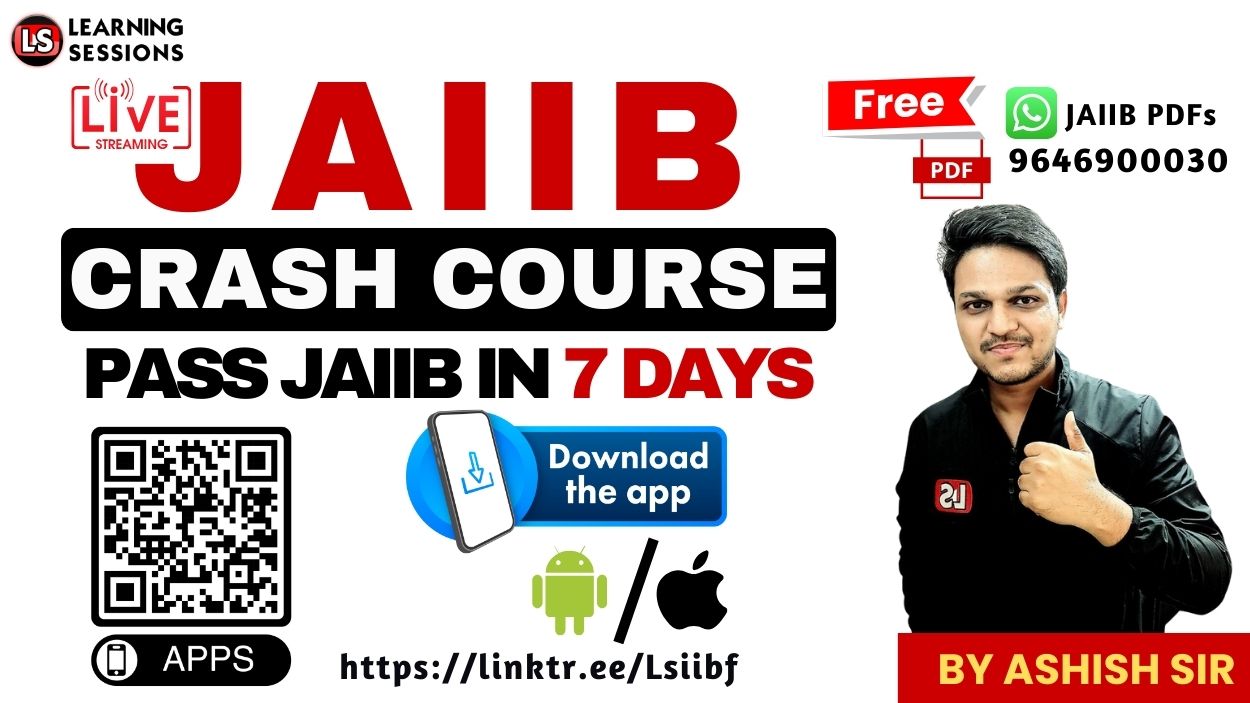Are you preparing for the Treasury Investment and Risk Management (TIRM) Diploma and feeling overwhelmed by the vastness of the financial markets? Whether you’re a banker, finance enthusiast, or diploma aspirant, understanding the financial markets is crucial for scoring well and applying practical knowledge in real-world banking scenarios.
This comprehensive blog is designed to decode the financial market topic in a simple, engaging, and exam-focused manner. From the basics of money and capital markets to the complexities of derivatives, forex trading, mutual funds, insurance regulations, and commodity exchanges – everything is covered in-depth. You’ll learn not only the “what” but also the “why” and “how” behind each concept.
This session is perfect for:
- Bankers aiming to clear the TIRM diploma exams
- Professionals looking to boost their conceptual clarity
- Students preparing for IIBF or related certification exams
👉 So grab a notebook, watch the embedded video, and scroll through this guide. Don’t forget to share your thoughts or doubts in the comments – we’d love to hear from you!
👉 Watch the Full Video First for Conceptual Clarity:
What is a Financial Market?
A financial market is a marketplace where buyers and sellers trade financial securities, commodities, and other fungible items at prices determined by supply and demand. The core purpose of financial markets is to allocate resources efficiently by enabling capital formation and liquidity.
Key Types of Financial Markets:
- Money Market – Short-term debt instruments (maturity < 1 year)
- Capital Market – Long-term securities (debt + equity)
- Derivatives Market – Contracts deriving value from underlying assets
- Forex (Foreign Exchange) Market – Currencies traded globally
- Insurance Market – Sale and purchase of risk protection policies
- Mutual Funds Market – Pooled investments by fund houses
- Commodity Market – Trading of agricultural and metal-based products
1. Money Market – Short-Term Debt Marketplace
The money market is a component of the financial market where short-term borrowing and lending of securities with a maturity of less than one year occurs.
Common Instruments:
- Treasury Bills (T-Bills): Issued by the Government of India; considered risk-free.
- Commercial Papers (CPs): Issued by corporates to meet short-term working capital needs.
- Certificates of Deposit (CDs): Issued by banks to raise short-term funds.
Features:
- High liquidity
- Low risk
- Regulated by RBI
Exam Tip: Equity shares are NOT money market instruments.
2. Capital Market – Long-Term Investment Arena
Capital market deals in long-term debt and equity securities. It is critical for funding business expansions, infrastructure development, and economic growth.
Sub-Divisions:
- Primary Market: Where new securities are issued for the first time (IPOs).
- Secondary Market: Where existing securities are traded (Stock Exchanges).
Instruments:
- Equity Shares
- Preference Shares
- Debentures
- Bonds
Features:
- Long-term investment
- Higher market risk
- Regulated by SEBI
- Prone to price fluctuations
3. Derivative Market – Risk Management via Contracts
A derivative is a financial instrument whose value is derived from the value of another asset (underlying asset) like stocks, commodities, interest rates, or currencies.
Types of Derivative Markets:
- Exchange-Traded Derivatives (ETD): Standardized and traded on exchanges.
- Over-the-Counter (OTC) Derivatives: Customized contracts traded privately.
Common Derivatives:
- Forwards
- Futures
- Options
- Swaps
Benefits of Exchange-Traded Derivatives:
- High liquidity
- Price transparency
- Lower counterparty risk
Risks with OTC Derivatives:
- Higher counterparty risk
- Lack of standardization
4. Foreign Exchange (Forex) Market – Currency Exchange Mechanism
The foreign exchange market facilitates the buying and selling of different currencies. It is the largest and most liquid financial market in the world.
Main Functions:
- Currency Conversion
- Exchange Rate Determination
- Hedging Currency Risk
- Reserve Management
Market Participants:
- Commercial Banks
- Central Banks
- Corporates
- Investors
- Individuals
5. Insurance Market – Protection Against Uncertainty
Insurance provides financial protection against unforeseen risks like death, theft, accidents, or damage to assets.
How It Works:
You pay a premium and receive a policy offering financial compensation during covered losses.
Types of Insurance:
- Life Insurance
- General Insurance
Regulator: IRDAI
6. Mutual Fund Market – Collective Investment Platform
A mutual fund pools money from investors and invests in a diversified portfolio of stocks, bonds, or other securities.
Features:
- Diversification
- Professional Management
- Liquidity
- Low Entry Barriers
Regulated by: SEBI
TI & RM | IIBF CERTIFICATION | Money Market | Part 1 [FREE EPDF]
7. Commodity Market – Trading Real Goods
The commodity market is where raw or primary products like metals, energy, and agricultural products are traded.
Types of Trading:
- Spot Trading
- Futures Contracts
Common Commodities:
- Gold, silver
- Crude oil
- Wheat, rice, cotton
Regulated by: SEBI (post-FMC merger)
Participants in Financial Markets
- Banks: Provide liquidity and participate in money/capital markets.
- Primary Dealers: Trade government securities.
- Investment Bankers: Facilitate fund raising and IPOs.
- Custodians: Manage securities on behalf of clients.
- Brokers: Execute buy/sell orders.
- Depositories (NSDL/CDSL): Maintain demat accounts.
Special Highlight: BRICS and Financial Markets
| Country | Unique Trait |
|---|---|
| India | Domestic-driven economy |
| Russia | Commodity-export based |
| China | Export powerhouse |
| Brazil | Developed economic structure |
| South Africa | Fast-growing African economy |
Main Goal: Promote multipolar world order & equitable global representation.
Conclusion
Congratulations! If you’ve made it this far, you’ve just unlocked a thorough understanding of the key components of the financial market – a crucial area of the TIRM Paper 1 exam.
👉 Now it’s your turn – Start revising, practice mock tests, and don’t hesitate to ask questions in the comments.
If you found this helpful, please:
- Leave a comment below
- Share this blog with your friends and colleagues
- Subscribe to our YouTube channel
- Explore our full course for TIRM diploma preparation
📥 Download Full PDF Notes:
Get the complete notes from this session in an easy-to-read PDF format:
🔽 Download Financial Market PDF Notes – Click Here
Also Like:







